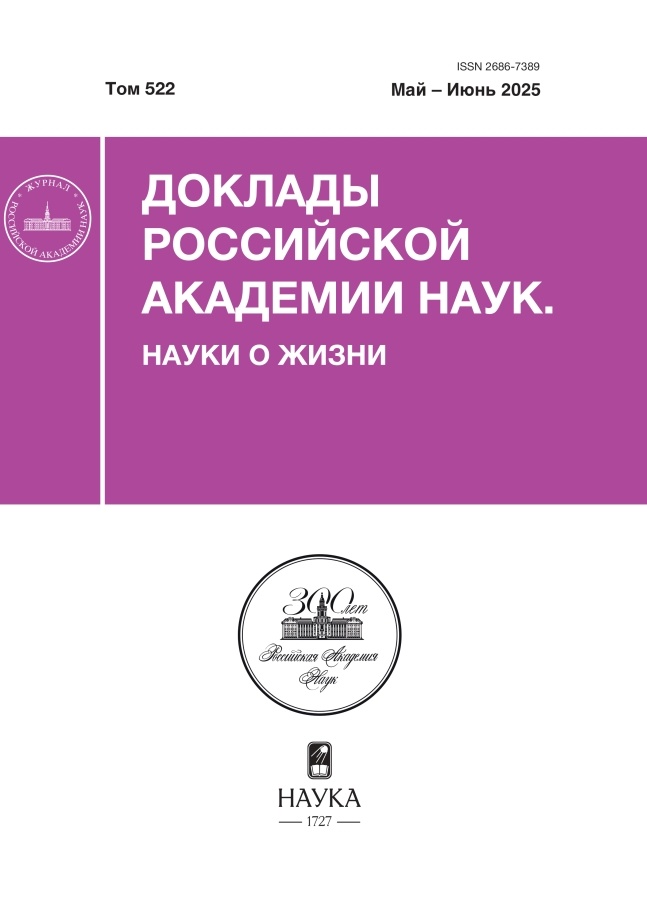Assessing the efficacy of anti-cancer drugs on organoid models derived from prostate cancer
- Authors: Silkina M.O.1, Razumovskaya A.V.1, Nikulin S.V.1,2, Tonevitsky A.G.1, Alekseev B.Y.2
-
Affiliations:
- National Research University “Higher School of Economics”
- National Medical Research Radiological Center, Ministry of Health of Russia
- Issue: Vol 515, No 1 (2024)
- Pages: 10-13
- Section: Articles
- URL: https://permmedjournal.ru/2686-7389/article/view/651434
- DOI: https://doi.org/10.31857/S2686738924020021
- EDN: https://elibrary.ru/WGAXGU
- ID: 651434
Cite item
Abstract
It has been proven that tumor organoids effectively mirror the phenotypic and genetic traits of the original biomaterial. It has been noted that outcomes from drug testing in organoid cultures can accurately represent the clinical response observed in patients. In this study, an organoid culture was derived from biopsy material of prostate cancer (PC). Subsequently, clinical practice drugs, docetaxel and enzalutamide, were tested on this organoid culture. Various techniques for evaluating the efficacy of drugs in vitro were compared. The half maximal inhibitory concentration of docetaxel was found to be markedly lower compared to that of enzalutamide. However, when tested at clinically relevant concentrations and incubation times, enzalutamide was more effective than docetaxel. Therefore, it is crucial to optimize the testing conditions for drugs on in vitro cultures for their subsequent application in clinical practice.
Keywords
Full Text
About the authors
M. O. Silkina
National Research University “Higher School of Economics”
Author for correspondence.
Email: mosilkina@hse.ru
Russian Federation, Moscow
A. V. Razumovskaya
National Research University “Higher School of Economics”
Email: mosilkina@hse.ru
Russian Federation, Moscow
S. V. Nikulin
National Research University “Higher School of Economics”; National Medical Research Radiological Center, Ministry of Health of Russia
Email: mosilkina@hse.ru
Russian Federation, Moscow; Moscow
A. G. Tonevitsky
National Research University “Higher School of Economics”
Email: mosilkina@hse.ru
Russian Federation, Moscow
B. Ya. Alekseev
National Medical Research Radiological Center, Ministry of Health of Russia
Email: mosilkina@hse.ru
Russian Federation, Moscow
References
- Sung, H. Ferlay, J. Siegel R.L., et al. Global Cancer Statistics 2020: GLOBOCAN Estimates of Incidence and Mortality Worldwide for 36 Cancers in 185 Countries // CA: A Cancer Journal for Clinicians. 2021. V. 71. № 3. P. 209–249.
- Каприн А.Д., Старинский В.В., Шахзадова А.О. Злокачественные новообразования в России в 2021 году (заболеваемость и смертность). // Москва: МНИОИ им. П.А. Герцена – филиал ФГБУ «НМИЦ радиологии» Минздрава России, 2022.
- Grimaldi A.M., Salvatore M., and Cavaliere C. Diagnostic and prognostic significance of extracellular vesicles in prostate cancer drug resistance: A systematic review of the literature. // Prostate Cancer and Prostatic Diseases. 2023. Vol. 26. № 2. P. 228–239.
- Montero A., Fossella F., Hortobagyi G., et al. Docetaxel for treatment of solid tumours: a systematic review of clinical data. // The Lancet Oncology. 2005. vol. 6. № 4. p. 229–239.
- Scott L.J. Enzalutamide: A Review in Castration-Resistant Prostate Cancer. // Drugs. 2018. vol. 78. № 18. p. 1913–1924.
- Armstrong A.J., Szmulewitz R.Z., Petrylak D.P., et al. ARCHES: A Randomized, Phase III Study of Androgen Deprivation Therapy With Enzalutamide or Placebo in Men With Metastatic Hormone-Sensitive Prostate Cancer. // Journal of Clinical Oncology. 2019. vol. 37. № 32. p. 2974–2986.
- Jackson S.E., Chester J.D. Personalised cancer medicine. // International Journal of Cancer. 2015. vol. 137. № 2. p. 262–266.
- Nikulin S.V., Alekseev B.Y., Sergeeva N.S., et al. Breast cancer organoid model allowed to reveal potentially beneficial combinations of 3,3′-diindolylmethane and chemotherapy drugs // Biochimie. 2020. vol. 179. p. 217–227.
- Poloznikov A.N., Nikulin S.V., Bolotina L.V., et al. 9-ING-41, a Small Molecule Inhibitor of GSK-3β, Potentiates the Effects of Chemotherapy on Colorectal Cancer Cells. // Frontiers in Pharmacology. 2021. Vol. 12. P. 1–18.
- Verduin M., Hoeben A., De Ruysscher D., et al. Patient-Derived Cancer Organoids as Predictors of Treatment Response // Frontiers in Oncology. 2021. vol. 11. p. 6491980.
- Nikulin S. V., Alekseev B. Y., Poloznikov A. A., et al. The first experience of using prostate cancer organoids as a model for personalized selection of drugs. // Cancer Urology. 2023. vol. 19, № 2. p. 41–46.
- Liston D.R., Davis M. Clinically Relevant Concentrations of Anticancer Drugs: A Guide for Nonclinical Studies. // Clinical Cancer Research. 2017. vol. 23. № 14. p. 3489–3498.
- Gibbons J. A., Ouatas T., Krauwinkel W., et al. Clinical Pharmacokinetic Studies of Enzalutamide. // Clinical Pharmacokinetics. 2015. vol. 54. № 10. p. 1043–1055.
- Xu H., Jiao D., Liu A., et al. Tumor organoids: applications in cancer modeling and potentials in precision medicine. // Journal of Hematology & Oncology. 2022. vol. 15. № 1. p. 58.
- Beshiri M., Agarwal S., Yin J.J., et al. Prostate organoids: emerging experimental tools for translational research. // Journal of Clinical Investigation. 2023. vol. 133. № 10. p. 169616.
- Laccetti A. L., Morris M. J., Kantoff P. W. A Clinical Evaluation of Enzalutamide in Metastatic Castration-Sensitive Prostate Cancer: Guiding Principles for Treatment Selection and Perspectives on Research. // OncoTargets and Therapy. 2020. vol. Volume 13. p. 13247–13263.
- Hafner M., Niepel M., Chung M., et al. Growth rate inhibition metrics correct for confounders in measuring sensitivity to cancer drugs. // Nature Methods. 2016. vol. 13. № 6. p. 521–527.
- Karkampouna S., La Manna F., Benjak A., et al. Patient-derived xenografts and organoids model therapy response in prostate cancer. // Nature Communications. 2021. vol. 12. № 1. p. 1117.
Supplementary files












